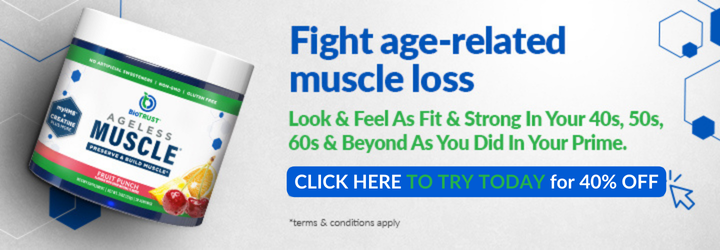What is Resistance Training? A Beginner’s Guide
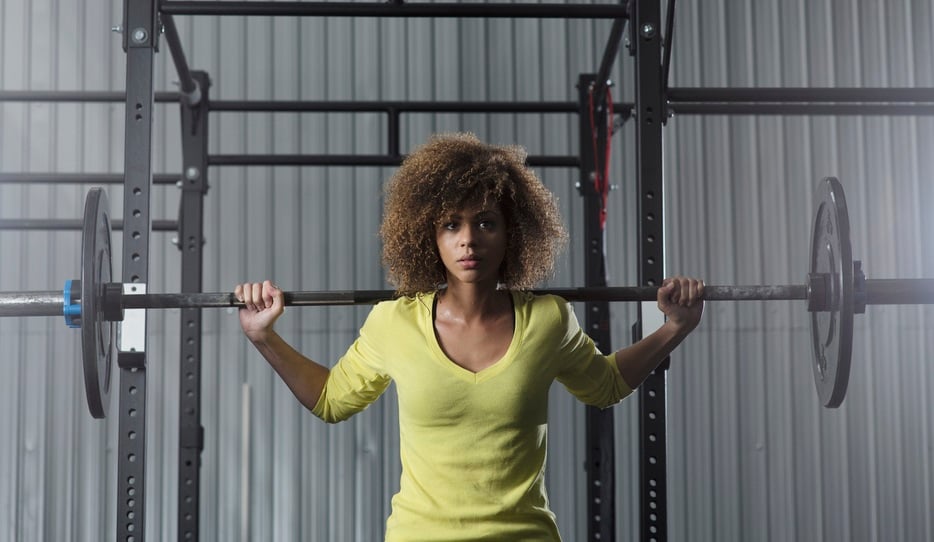
I was chatting with my good friend Sheila the other day, and we started talking about exercise. (And this time, I wasn’t even the one who brought it up.)
See, Sheila’s just recently gotten the fitness bug and started a gentle walking/jogging program. She’s been making progress and is enjoying the exercise—especially getting outside—but her results haven’t been what she was hoping for.
Knowing I’m pretty much a hardcore fitness enthusiast (to put it mildly), she asked me what I’d recommend.
“Add some resistance training!” I told her enthusiastically.
“What’s that?” she asked. And continued with more questions, like: why is it such a big deal? How should you train your muscles? Where do you start?
These are all great questions—especially since she’s a beginner!
Keep reading, and I’ll share with you exactly what I told Sheila. So you, too, can learn more about resistance training, your muscles, the best way to train for results, and how to get started with resistance exercises today.
What Is Resistance Training?
Resistance training is known by several names, some of which you may recognize, including strength training, bodyweight training, and weight lifting.
“Strength training is a type of physical exercise specializing in the use of resistance to induce muscular contraction which builds the strength, anaerobic endurance, and size of skeletal muscles.” – Wikipedia
Some great reasons to engage in strengthening your muscles are to:
- increase your metabolism
- improve your health markers
- reduce stress
- tone your body
- reshape your body
- improve your strength
Training: How to Combine the Muscle Groups
Resistance exercises strengthen your muscles, and to effectively train, you need to know the various muscle groups. Keep in mind, we usually just discuss the major muscle groups, but there are numerous smaller muscles that also comprise these larger groups as well.
The main muscle groups include:
- chest
- back
- legs
- shoulders
- biceps
- triceps
- calves
- abdominals
For time purposes and ease of training, many folks will normally separate muscles into specific groups to train them efficiently.
Why?
Certain muscles work together with other muscles, so there’s a natural tendency to train them together. Which muscles are the most commonly combined? Usually, you’ll see people training along the following lines:
- whole body
- chest/shoulders/triceps
- back/biceps
- legs/calves/abs
Getting Started: A Beginners’ Resistance Training Workout
Are you ready to get started? Are you ready to try something new that will change your body for the better?
Here’s an easy-to-follow resistance exercise workout to get you started (or restarted if you’ve recently taken some time off). You may want to invest in a qualified personal trainer for a few sessions until you learn the exercises and proper form and execution. Doing strength training exercises right is extremely important and will also help you avoid potential injury.
• Full Body Workout—this means you’ll do one exercise for each body part during each training session. Aim for 12 – 15 repetitions (one “set”) of each exercise before moving on to the next one. You may take 1 – 2 minutes rest between each set if needed. And repeat the entire circuit 1 to 3 times. Always be sure to start with a 5- to 10-minute warmup like a brisk walk or a gentle jog.
• CHEST—a chest press exercise can be done on a machine or using a weight bench. If you’re just starting out, then resistance exercise machines are often the best way to go. Sit on the machine and place your arms on the handles, push forward until your elbows are 99% extended (without locking out the elbows). Hold for a count of one and slowly return to the start. Repeat.
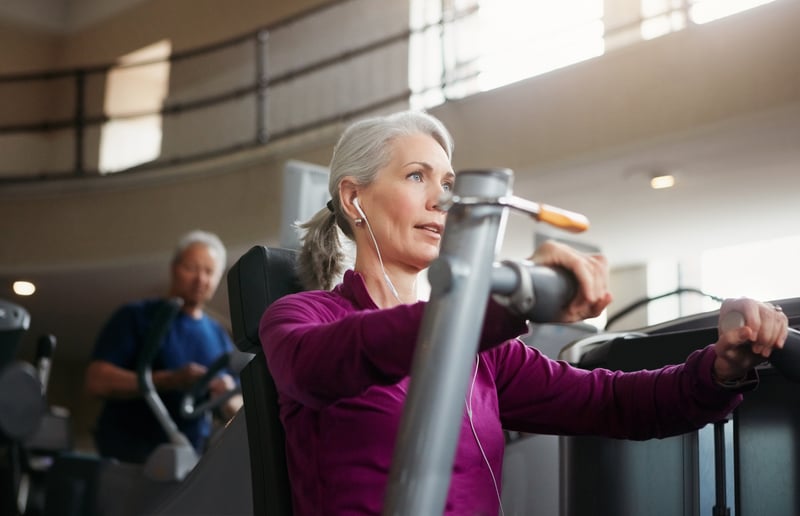
• SHOULDERS—you can either use a shoulder press machine or you can sit on a bench and use dumbbells. If you choose to go the dumbbell route, you may want to have a friend or trainer assist you so you maintain proper exercise form. Sit on a bench with a dumbbell in each hand, looking straight ahead, with your arms bent at the elbows and palms facing forward. Your upper arms should be parallel to the floor in the starting and ending position. Slowly press upward in line with your ears until the dumbbells touch at the top. Lower back to the starting position and repeat.
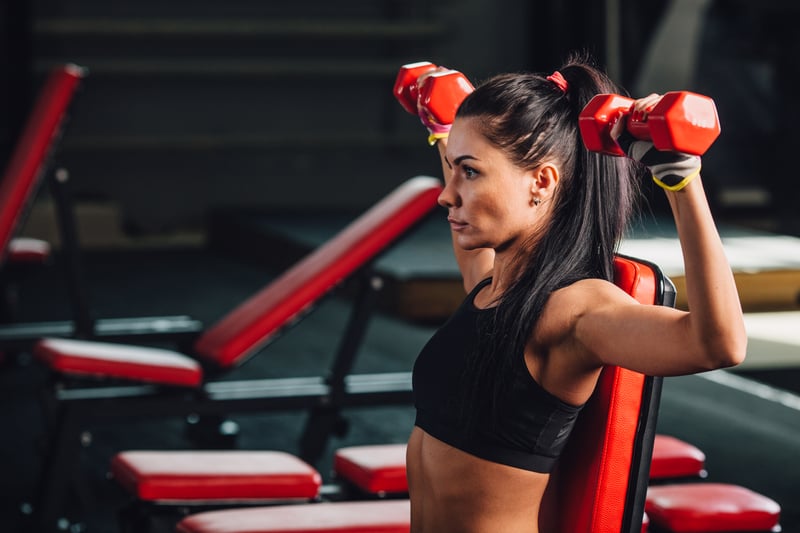
• TRICEPS—triceps muscles are the muscles on the backside of your arms. You can strengthen these by doing bench dips. Start slowly at first and work your way up to 10 repetitions. Begin by sitting on the side of a bench or chair with your legs either bent or out straight in front of you (the farther your feet are from your hips, the more difficult the exercise). Grasp the edge of the bench with your hands. Slowly move your hips forward until they are off the bench. Then gently lower your body, keeping your hands securely on the bench. Lower your body until your upper arms are parallel to the floor. Pause and then raise your body back to the beginning position and repeat.
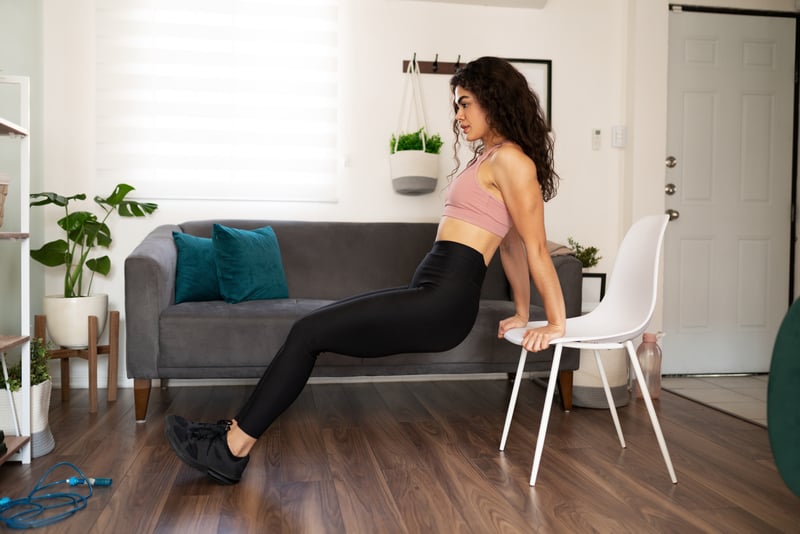
• BACK—doing a pull-down-type exercise is a great way to strengthen your back. Begin by sitting on the machine seat facing forward. Reach up and grab near the ends of the bar with each hand, palms facing forward. Sit up straight and pull the bar down toward your chest while pulling your elbows behind your back. Hold for a count of one and slowly bring the bar back up to the starting position.
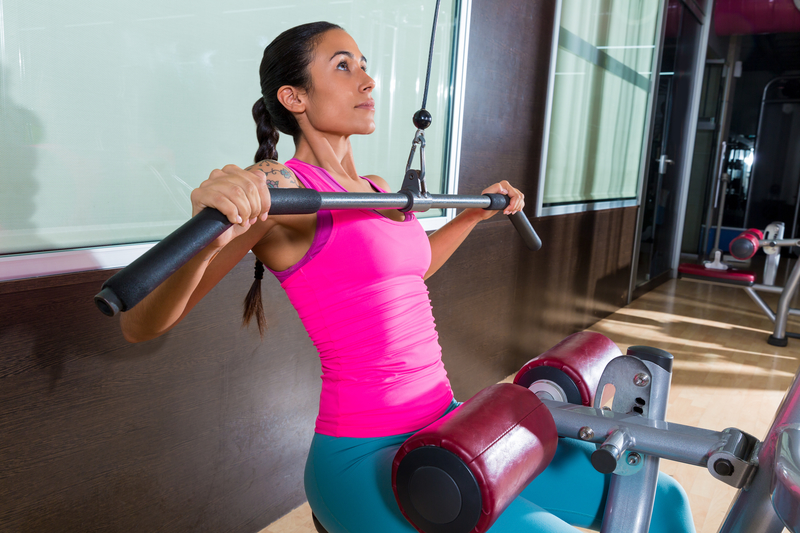
• BICEPS—use the biceps curl to work your arm muscles. Stand with a dumbbell in each hand, palms facing forward. Doing one arm at a time, keep your elbow tucked into your side, and raise the lower half of your arm until the weight touches your shoulder. Return slowly to the starting position.
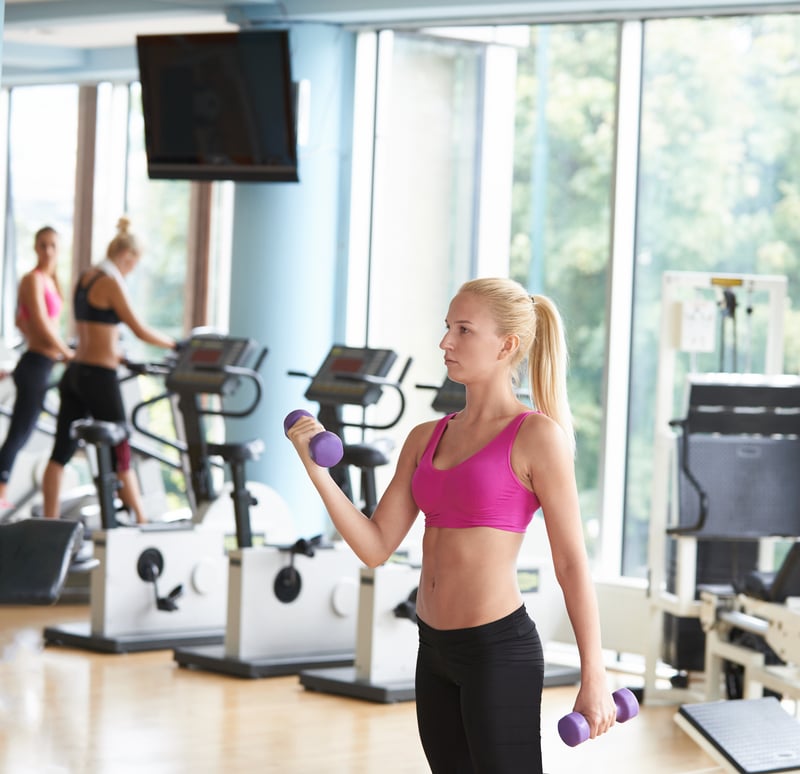
• LEGS—using a leg press machine is a great exercise that will work all the muscles in your legs effectively. While seated in the machine, place your feet in the middle of the platform. Release the platform and slowly lower it by bending your knees until they form a 90-degree angle. Push back up to start and repeat.
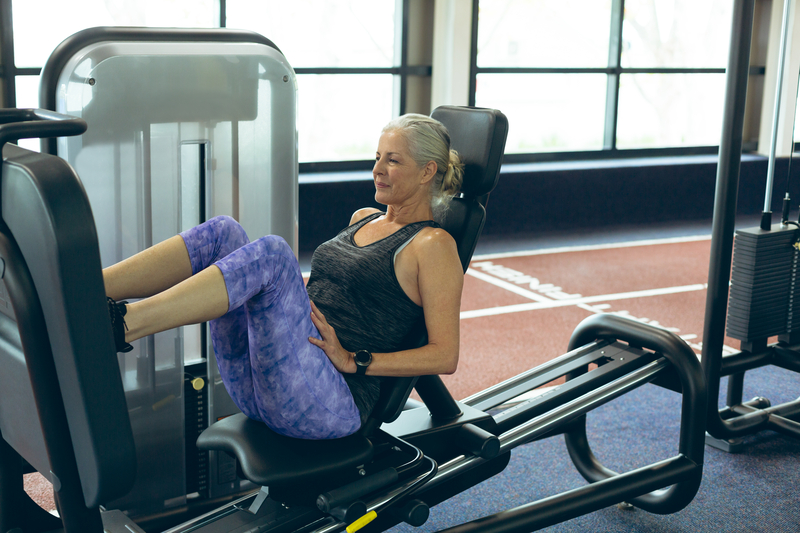
• CALVES—probably the easiest way to work calves is with a calf raise exercise. While standing, with your arms straight down by your sides, start with a five-pound dumbbell in each hand. Gently lift up onto your toes and hold for a count of five. Return to the starting position and repeat.
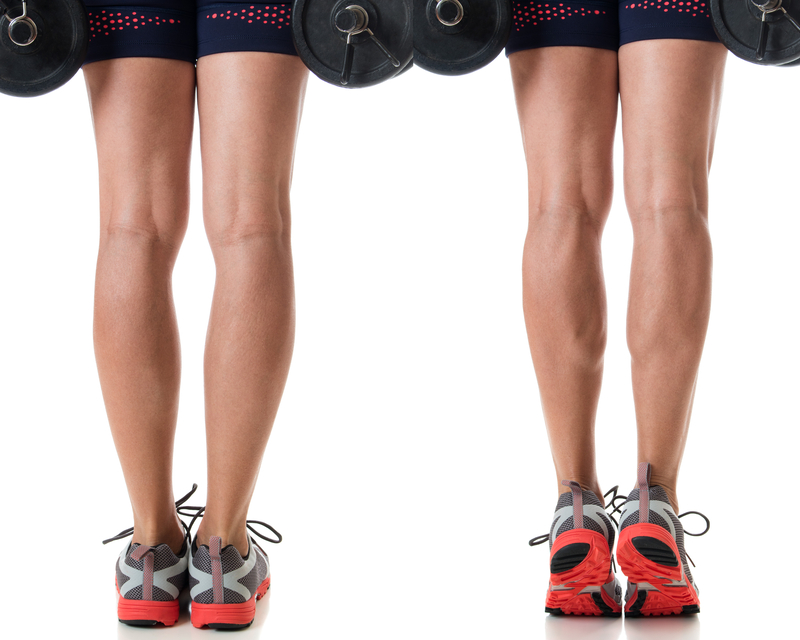
• ABS—there are many ways to strengthen your ab muscles, but one popular and very effective exercise is the “plank.” Start with your forearms and knees on the ground with your hands shoulder-width apart, palms down, with your elbows directly beneath your shoulders. Extend your legs straight behind you, resting on your toes (as if you were going to do a push-up) with your torso and legs in a straight line. Maintain this position for 30 seconds, and then release, coming back to rest on your knees. Repeat three times.
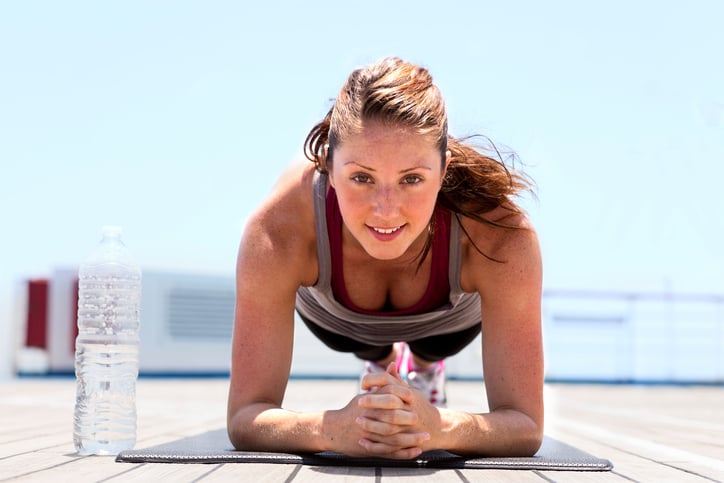
You may perform this workout 2 – 3 times per week, keeping at least one day of rest in between workouts. Continue with this workout for four weeks before moving up to a more intermediate workout.
Now that you’ve gotten started, we look forward to hearing about your results as you watch your body get stronger, firmer, and more toned with regular resistance training!



